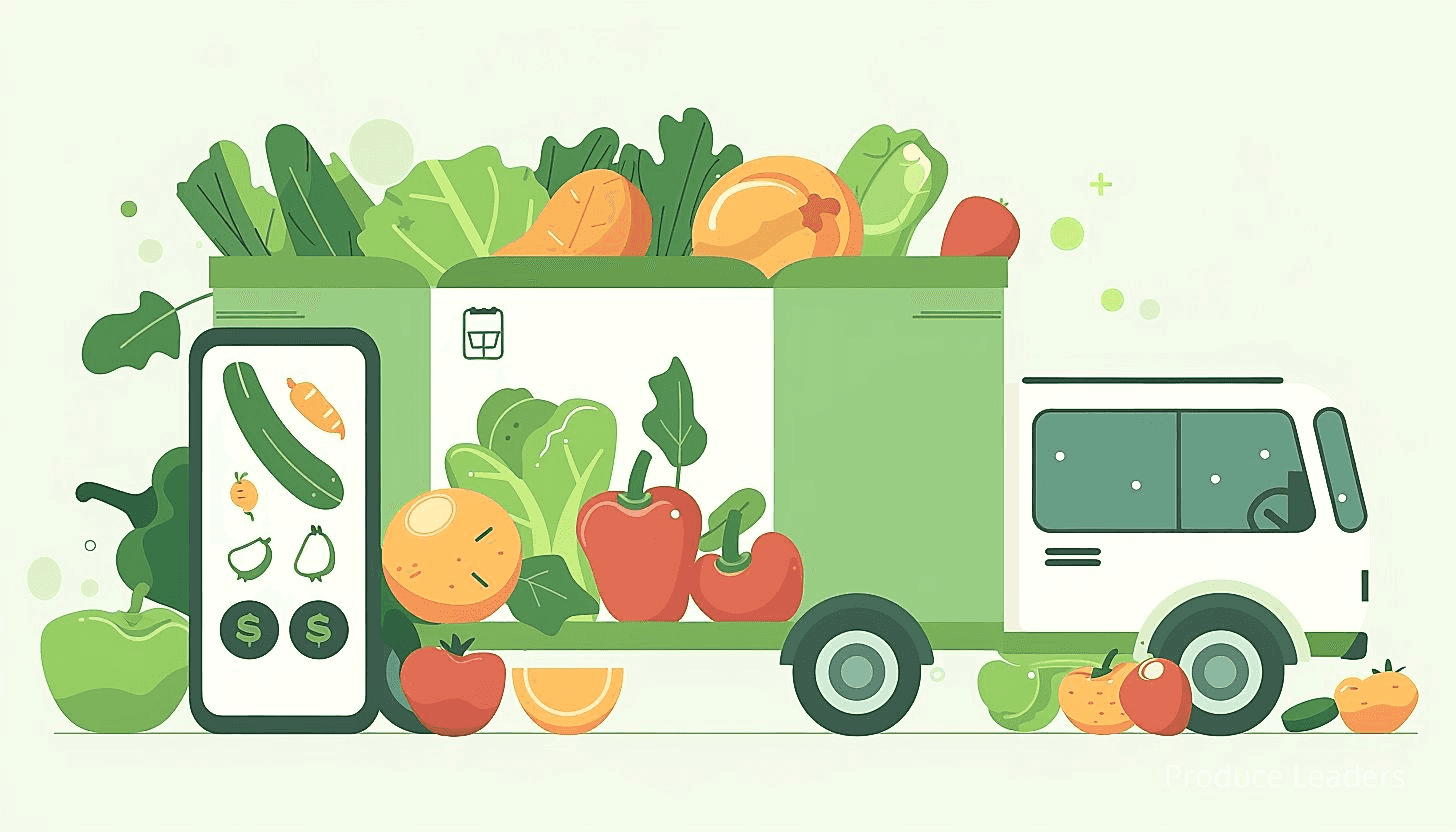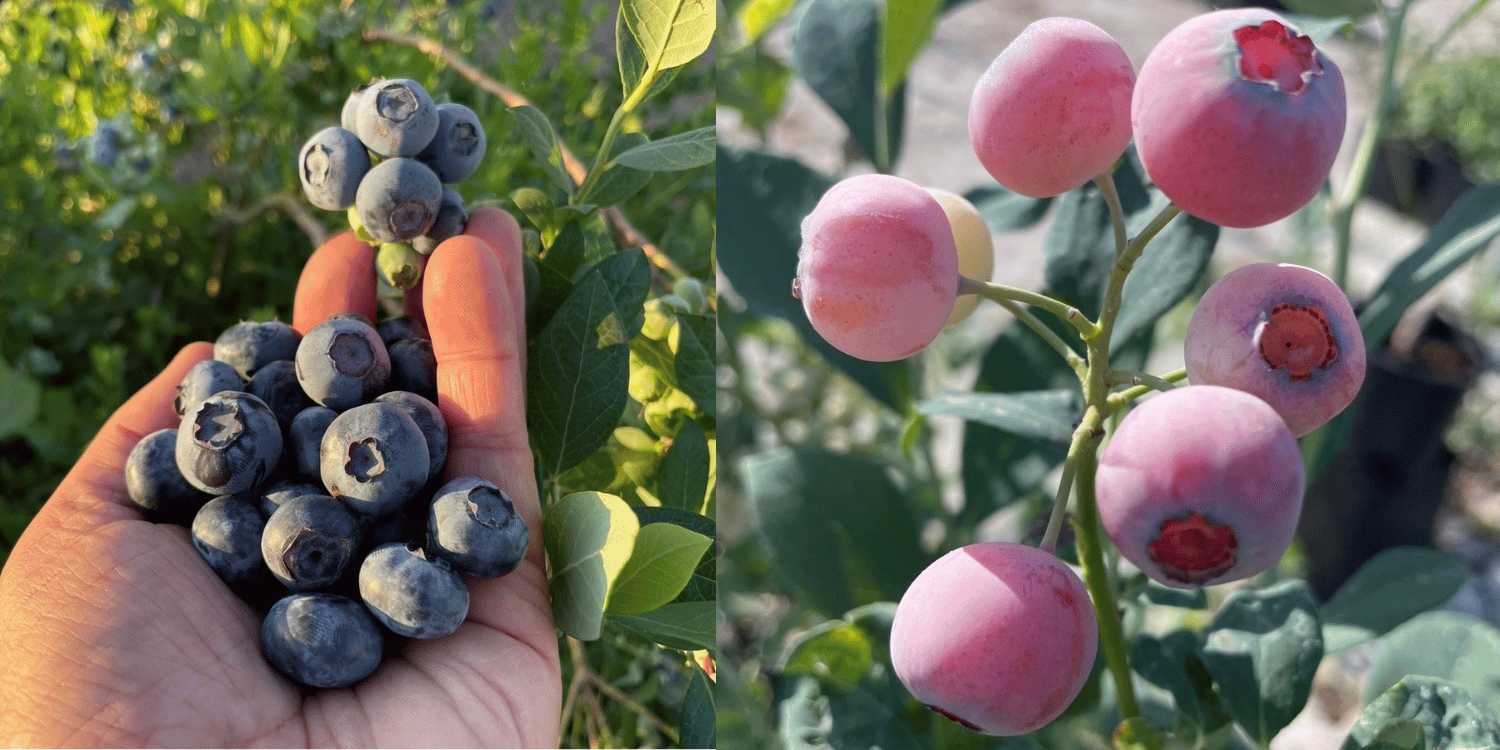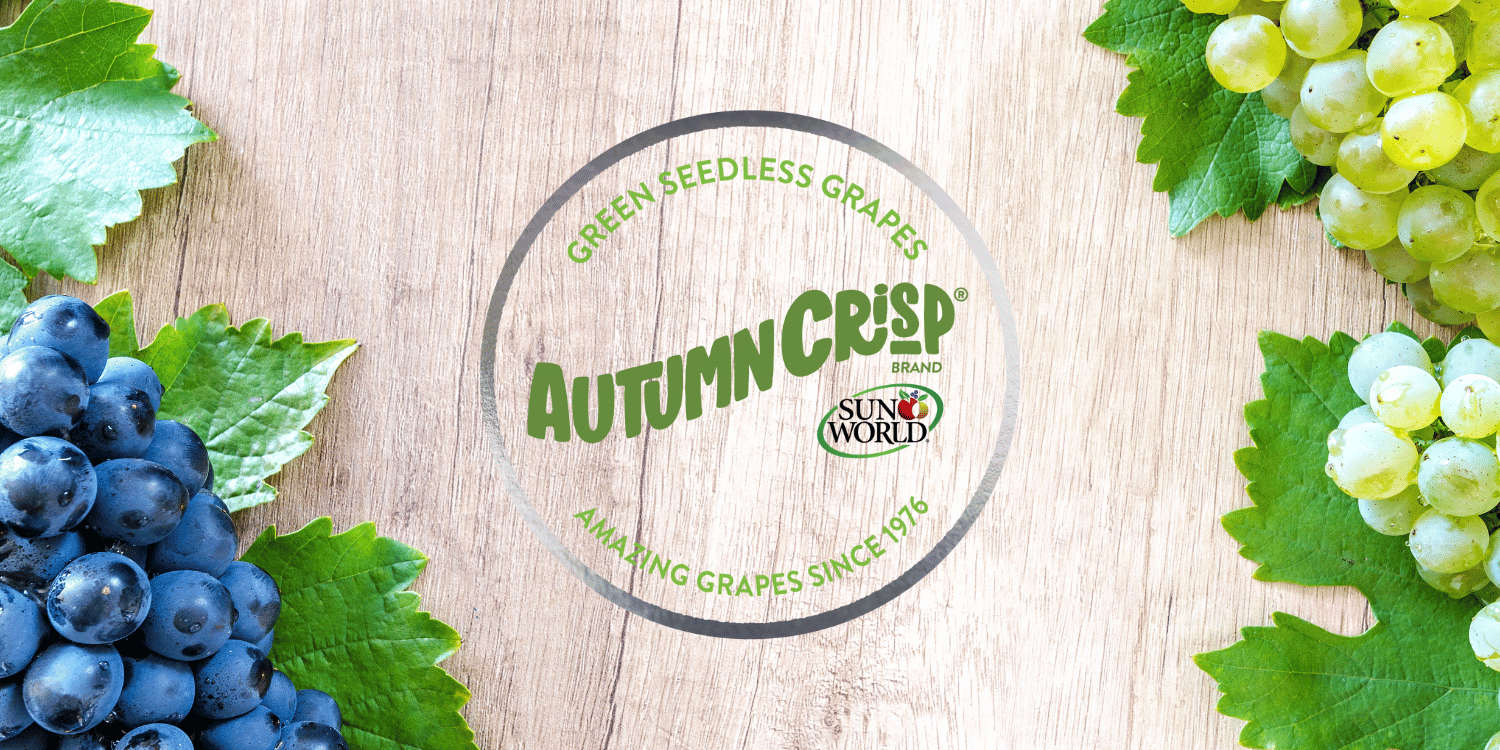Emerging opportunities in the home delivery of fresh produce are largely driven by evolving consumer behaviors and technological advancements.
Increased consumer focus on health and wellness has led to heightened demand for fresh, organic produce delivered directly to consumers’ homes.
Moreover, advancements in logistics and supply chain capabilities allow for efficient and broad geographic coverage.
Innovative business models, such as subscription-based services and online marketplaces, are also providing growth opportunities in this sector.
Furthermore, the expansion of this sector is also facilitated by the increasing penetration of smartphones and the growing convenience culture.
Integration of AI and analytics in the supply chain could further improve inventory management and demand prediction, thus adding to the emerging opportunities.
- What drives home fresh produce delivery?
- Consumer demand for health and wellness in produce delivery.
- Tech’s critical role in reshaping this trend.
- Innovative delivery models in the fresh produce sector.
- AI boosts supply chain efficiency in this industry.
That’s just the tip of the iceberg. We are going to examine other pertinent topics related to fresh produce home delivery.
In the upcoming sections, we will be looking at various factors that are revolutionizing the sector, including technological advancements. Not only this, but we will also be talking about how artificial intelligence is making its way to improve the supply chain management in the industry.
Stay with us as we look more deeply into these fascinating advancements, illuminating how an everyday task like grocery shopping is being entirely reshaped in the modern world.
The next part of our discussion will reveal essential insights that may define the future of fresh produce home delivery. Keep reading to stay updated on these industry dynamics.
Contents
- What Drives Home Fresh Produce Delivery?
- Consumer Demand for Health and Wellness
- How Tech is Shaping this Trend?
- Innovative Models in Fresh Produce Delivery
- Role of Smartphones in Convenience Culture
- How AI Boosts Supply Chain Efficiency?
- Importance of Geographical Coverage
- Can Subscriptions Boost Growth?
- Online Marketplaces: A Growing Prospective
- The Bottom Line
What Drives Home Fresh Produce Delivery?
In Short: The surge in home fresh produce delivery services is attributed to several factors such as convenience, health consciousness, authenticity, personalized customer experience, availability in various regions, and the willingness of higher income households to pay extra for quality. It’s more than just an easy solution, it represents deliberate lifestyle choices favoring health, convenience, and quality.
Ideally, the rise of home fresh produce delivery services is driven by several factors. It’s a trend that’s swept across the globe, impacting urban to rural areas in equal measures.
But what exactly are these factors? Could it be that we’re just fascinated with the convenience of modern technology? Maybe. However, let’s dig in deeper.
The first key driver for this trend is the ever-increasing need for convenience. People lead busy lives in our modern societies. They hardly find time or energy for shopping after a long day at work.
In this reality, the idea of having fresh vegetables and fruits delivered right to their doorstep sounds appealing, doesn’t it? It’s a time saver.
Furthermore, health awareness has become significant in recent years. People have grown more health-conscious, making deliberate choices towards a healthier lifestyle.
Part of these choices involves eating fresh and organic produce. But how can they be sure the supermarket veggies are indeed organic and fresh?
Home delivery services offer a solution to this conundrum. Here, customers can buy from trusted sources, assuring them of the quality and authenticity of the produce.
Considering these drivers, it’s interesting to list down some of the common reasons behind the demand for home fresh produce delivery services:
- Convenience – It saves time and energy
- Health consciousness – Consumers are making healthier eating choices
- Authenticity – Consumers trust certain sources more
Next, there’s an element of personalized customer experience. With home delivery services, customers can customize their orders according to their needs and preferences. They can choose which types of fruits or vegetables they want and in what quantities.
This wouldn’t be possible in a physical store, would it? So it’s another favourable point for this trend’s growth.
Another key driver is the increased accessibility to different regions and communities. Even those living in remote and rural areas can now access fresh produce, thanks to home delivery services.
This wasn’t the case with the traditional retail model. The services have made it possible, thus leading to an increase in demand.
Lastly, factors like population growth, urbanization, and rising incomes have also boosted the demand. Households with higher incomes are notably willing to pay extra for the convenience and quality offered by these services.
Let me tell you, fresh produce delivery to homes isn’t just about choosing the easy way out. It’s about making deliberate lifestyle choices in favor of health, convenience, and quality. It’s about embracing modern solutions to traditional problems. And the varying drivers make sense now, don’t they?
Consumer Demand for Health and Wellness
In Short: Consumer awareness of the impact of diet on health is driving an increasing demand for fresh produce home delivery, providing convenience and promoting healthier eating habits. Key factors pushing this trend include convenience, health consciousness, sustainability, and personalisation, thus presenting opportunities for businesses that can adapt to this shift towards an eco-friendly and health-oriented lifestyle.
As more people grow aware of the impact diet has on their health, the demand for fresh produce deliveries is understandably increasing. A shift to buying fresh, healthful foods is apparent now more than ever.
In the modern-day rush, convenience becomes a significant factor when it comes to grocery shopping. The question is, wouldn’t you prefer your groceries to be delivered fresh to your doorstep?
Through home delivery options, fresh produce now finds its place directly in households, eliminating the worry around getting to the store on time. Not only is home delivery convenient, but it encourages healthier eating habits as well.
Consumers are realizing the value of getting their daily dose of fruits and vegetables. Hence, demand for farm-fresh produce right at their door is becoming a trend.
But what are the key factors driving this demand? Let’s take a closer look.
- Convenience: The ease of doorstep delivery is incomparable. It makes shopping less time-consuming and more enjoyable for customers.
- Health consciousness: Increased awareness about the importance of a balanced diet has escalated the need for fresh fruit and vegetable deliveries.
- Sustainability: Home deliveries of fresh produce are often seen as a more sustainable option, reducing food waste and carbon footprints.
- Personalisation: Many delivery services offer the options to customize their produce boxes, meeting varying consumer needs and preferences.
These factors are representative of consumer behaviors leaning towards a more convenient, healthy, and eco-friendly lifestyle. Are these changes here to stay?
The ongoing pandemic has indeed amplified the need for better health and wellness. Fresh produce home delivery services have played a pivotal role in fulfilling this need, allowing people to maintain a healthy diet while minimizing exposure to crowded areas.
This rise in consumer demand is creating opportunities for vendors, farmers, and delivery services alike. As a result, many businesses are stepping up their game – adapting to this new normal, providing better services, and striving for customer satisfaction.
Could this lead to a healthier future for everyone? We are fast moving towards it, considering the growing commitment of individuals towards their health and the escalating demand for fresh produce.
Numerous start-ups have recognized this shift and stepped up their game to provide door-to-door fresh produce delivery services. They are grabbing the emerging opportunity – can traditional businesses afford to lag?
Leveraging this opportunity is not just about delivering fresh produce, it’s about bringing about a positive change in people’s lives and making a contribution to their health and wellness journey.
After all, isn’t it heartwarming to know that from farmers to buyers, everyone benefits? The rising consumer demand for fresh produce home delivery is fostering a cycle of health and wellness for everyone involved.
How Tech is Shaping this Trend?
In Short: Technology is revolutionizing the fresh produce home delivery sector by improving harvesting, packaging, and delivery processes through AI, GPS, and blockchain innovations. These tech advancements not only ensure the freshness and efficient delivery of produce but also promote sustainability through energy-efficient and waste-reducing systems.
The evolution of technology offers incredible opportunities in the fresh produce home delivery sector. Investments in technology have dramatically reshaped the industry, bringing convenience and efficiency to the forefront.
Do you ever wonder how that fresh bundle of spinach lands on your doorstep in pristine condition? Or how your grocery app knows exactly when you’re running low on produce?
It’s all about smart technology permeating every stage of the process – from the farm to your table.
The advancements in field technology allow farmers to gauge the perfect time for harvesting. They can now precisely manage how and when each crop is harvested, ensuring the produce reaching your home is genuinely fresh.
Once the produce is harvested, it’s time for packing and delivery. And this is where the tech revolution truly displays its prowess.
AI-based packaging solutions are the talk of the town. These smart systems can sort the produce based on various criteria – size, quality, and type.
The use of AI not only increases the efficiency of packaging operations but also reduces wastage to a great extent. And don’t we all appreciate a system that respects our limited resources?
Next on the menu – delivery. Remember the traditional delivery methods that seemed like a game of waiting?
We have indeed progressed! A wide array of technological advancements – like drones, autonomous vehicles, tracking apps – now spearhead the delivery mechanisms, ensuring we receive our fresh produce when we need it.
Before we look more deeply into the delivery aspect, let’s look at some game-changing technologies in the home delivery sector:
- GPS Tracking for real-time updates
- AI-based route optimization to ensure swift deliveries
- Integration of Blockchain technology for improved transparency
- The advent of drones and autonomous vehicles for efficient supply chain
Technologies like GPS tracking engage the customer by providing accurate delivery times. The AI-based route optimization ensures delivery executives take the fastest route possible to your doorstep.
Ever thought about the full journey of your produce before you open that delivery box? Blockchain technology enables complete transparency of the food supply chain.
Consumers can track their produce’s journey from its origin to their doorstep. It’s empowering, isn’t it?
And not to forget the drones and autonomous vehicles that make the concept of ‘Fast Deliveries’ a reality. Long gone are the days where next-day delivery was a cause for celebration.
Pro Tip: Investing in technology can revolutionize your operations in the fresh produce home delivery sector, increasing efficiency and reducing wastage through smart systems like AI-based packaging, GPS tracking, and blockchain technology.
While there’s no denying that technology has massively facilitated our access to fresh produce, it’s also crucial to note that there’s an increasing emphasis on sustainability. From energy-efficient drones to recyclable packaging materials, tech innovations are ensuring we can indulge in fresh produce without jeopardizing our planet.
So next time you pick up those crisp apples or meticulously packed leafy greens, don’t forget to appreciate the tech marvels that made it possible. The tech-enabled future of fresh produce delivery is here, and it is as fresh as it gets!
Innovative Models in Fresh Produce Delivery
In Short: The fresh produce delivery industry is revolutionizing due to modern technology, featuring models like Direct from Farm, Subscription Models, E-commerce Models, Online Farmers Market, Community Supported Agriculture, and Brick and Mortar which balance consumer convenience with direct farm sourcing. Focused on meeting consumer needs, this industry continues to innovate, suggesting the potential emergence or evolution of existing models in the future.
As we navigate through modern times, technological advancements continue to emerge, creating new opportunities and reshaping the way we live. Isn’t it interesting to see the range of adaptations by various industries?
Take the agricultural sector, for instance; this industry has experienced massive changes in recent years. And why wouldn’t it? With increased urbanization and need for convenience, fresh produce delivery is now a booming industry.
Various models capture the unique nature of this innovative market. Some utilize technology and applications for ordering, while others build on subscription-based services. But have you ever wondered what these models look like?
Let’s take a closer look at some standout models in the fresh produce delivery space.
Introducing the list, readers, let’s dive into the fine details of these models.
- Direct from Farm models emphasize on bridging the gap between farmers and consumers. They operate by partnering with multiple farmers and delivering the produce straight from the farm to the customers.
- Subscription Models are popularly employed by many delivery services. With these, consumers subscribe to deliver services where they receive fresh produce at regular intervals – usually weekly or bi-weekly.
- E-commerce Models use online storefronts where consumers place orders for fresh produce, then these platforms handle the delivery. This seems simple, right? Despite its simplicity, it’s an extremely efficient model!
Now picture a model that combines the criteria of getting fresh food directly from the farmer plus the convenience of delivery, that’s the Online Farmers Market model. They operate online and bring the farmers’ market right to your doorsteps. Innovative, isn’t it?
Consider Community Supported Agriculture (CSA), a model that connects consumers directly to a nearby farm. It allows consumers to take part in a share or membership with a local farm and receive a box (or bag) of seasonal produce each week throughout the farming season.
The Brick and Mortar model is a blend of traditional retail and delivery. Consumers have the option of visiting the store for their produce or ordering it online. It’s a model that offers the best of both worlds. Do you see the potential?
Indeed, we are living in exciting times with all these innovative models popping up in the fresh produce delivery industry. Yet, remember that as fascinating as these innovations are, they are successful because they focus primarily on serving their customers’ needs. Do you resonate with this philosophy?
With advancements in technology and ever-evolving consumer needs, the fresh produce delivery industry is ripe for even more innovation. Will we see more models emerge in the future, or modifications of existing ones? Only time will tell, my reader, as we continue watching this fascinating industry evolve.
Role of Smartphones in Convenience Culture
In Short: Smartphones significantly influence the culture of home deliveries, acting as a vital bridge between consumers and businesses while providing users with unprecedented convenience and control. Their impact extends from user-friendly interfaces and mobile payment integration to real-time tracking of orders, increasing demands for instant service and fundamentally shaping consumer expectations.
The advent of smartphones has undeniably cemented itself as a game changer in the home delivery of fresh produce. Empowering consumers with unprecedented convenience, the smartphone revolution has played a considerably substantial part in shaping the culture of home deliveries.
Smartphones are facilitators for the digital platform. These platforms are largely the mechanisms that empower consumers to demand goods and services at the touch of a boton.
Why are we so comfortable in doing this?
The interface of these platforms is user-friendly, leveraged by mobile technology. This removes barriers to product acquisition, making shopping for fresh produce an activity that can be done without leaving the comfort of home.
But how significant are smartphones in this aspect? Let’s look at a few key points:
- They offer an omnichannel presence for businesses, expanding their reach to a diverse consumer base.
- Through push notifications and personalized ads, smartphones inform consumers about fresh inventory, flash sales, discounted prices, and more.
- Mobile payment integration is an easy and secured method of transaction that simplifies the purchasing process.
- If businesses are making use of customer relationship management (CRM) strategies, they can assess buying habits and engage customers accordingly through their smartphones.
Let me tell you, smartphones play a important role in decreasing the gap between consumers and businesses.
The aspect of real-time tracking is another instance where smartphones have demonstrated their worth in the home delivery culture.
Isn’t it comforting to know when exactly your order is arriving?
The introduction of GPS technology integrated into delivery apps has essentially changed the way we perceive home deliveries. The system goes beyond just convenience, offering users a sense of control and assurance about their delivery.
Are we seeing a future where smartphones become more integral in our everyday lives?
This convenience culture propelled by smartphones has fundamentally changed consumer expectations. The need for instant gratification, facilitated by next-day or same-day delivery, someway, has become the new norm.
This quick delivery has increased consumer demands for instant service, further pushing businesses to adapt and evolve to match the rapidly changing landscape.
In essence, the role of smartphones in convenience culture, particularly in home delivery of fresh produce, is tremendous and continues to amplify. Steadily emerging as the forefront of digital transformation, smartphones are turning possibilities into routines, making convenience a part of our everyday reality.
How AI Boosts Supply Chain Efficiency?
In Short: Artificial Intelligence (AI) bolsters supply chain efficiency in fresh produce delivery by providing predictive analytics, leading to better inventory management, quality control, and logistics. Additionally, AI contributes to sustainability and reduces waste by optimizing routes and enhancing pick and pack procedures.
Artificial Intelligence (AI) has become a revolutionary advantage in every sector, hasn’t it? The supply chain of fresh produce delivery is no exception.
When used strategically and thoughtfully, AI can increase proficiency in the supply chain like never before. But how, you may be wondering?
AI brings about predictive analytics. Predictive analytics is a sophisticated tool that evaluates historical data to predict future outcomes effectively. Data is a powerful tool, isn’t it?

For the supply chain of fresh produce, these predictions could be about customer behavior. This anticipation allows businesses to respond to market changes, and that’s a big plus.
Moreover, predictive analytics can forecast problems before they occur. Imagine knowing a problem before it happens and having enough time to perform preventive measures? Yes, AI makes this a reality.
Let’s now consider some of these predictive analytics boons.
- Inventory management: By predicting customer demand, AI can aide in maintaining an optimal inventory.
- Quality control: AI can predict potential quality issues, enabling suppliers to take early corrective actions.
- Logistics: AI’s predictive analysis can anticipate transport delays, helping to optimize the logistics process.
Another fascinating AI advantage is noise reduction. Too much data can be overwhelming, right? AI in supply chain comes to the rescue again.
It filters irrelevant data, or ‘noise’, out of the supply chain. This process ensures you have the necessary, accurate information for decision-making.
Speaking of decisions, wouldn’t it be nice to have help in making important ones? AI meets this need through prescriptive analytics. Pretty interesting, isn’t it?
A Prescriptive analytics formulate the best course of action based on predictive analysis outcomes. What better guide could a fresh produce supplier ask for?
Even more importantly, AI can promote sustainable practices within the supply chain. Have you ever considered the importance of sustainability in the supply chain?
With functions such as route optimization, AI can reduce a business’s carbon footprint. Now that’s an admirable perk.
AI also contributes to reducing food waste by enhancing pick and pack procedures. Thus ensuring only fresh and quality produce reaches the customers.
It’s undeniable, AI takes the supply chain of fresh produce home delivery to a new level of efficiency.
It brings accuracy, speed, prediction, decision-making assistance, and sustainability to the table. Isn’t that amazing?
Given its myriad of advantages and growing acceptance, we can safely predict AI’s ongoing role in revolutionizing supply chains. A sneak peak into the future, perhaps?
Important: Artificial Intelligence (AI) increases efficiency in the supply chain by using predictive analytics to anticipate customer behavior, forecast potential problems, aid in inventory management, quality control and logistics, and promote sustainable practices.
At the end of the day, the incorporation of AI represents a strategic move in any fresh produce delivery business. And it does all this while promoting sustainable, proficient and customer centric practices.
And isn’t that what we all hope to achieve?
Importance of Geographical Coverage
In Short: Geographical coverage is essential in home delivery of fresh produce, affecting availability, assortment, logistics, and operations. A wide geographical scope promises variety, quality, supports local communities, reduces carbon footprint, and contributes to sustainable development and human welfare.
When addressing the subject of home delivery of fresh produce, the geographical scope is an essential factor. This factor not only affects the availability and assortment of the products, but it also plays a major role in the logistics and operations of businesses.
Consider the fact that different regions produce various types of fruits, vegetables, and other agricultural produce. All of these are cycle-based, meaning they are available in their peak form during specific seasons. Geographical coverage impacts the service’s diversity and richness.
Wouldn’t you appreciate the convenience of having a wide variety of fresh, in-season produce delivered to your doorstep? Would the prospect of trying exotic fruits and vegetables that are not locally available entice you?
Well, the key to fulfilling these coveted desires lies in having a wide geographical coverage. The broader the reach, the more variety and quality a delivery service can promise.
We won’t just talk about variety here. Let’s dig in into the specific reasons why a wide geographical coverage is important for a fresh produce home delivery service:
- Quality assurance: The possibility to source produce directly from farms ensures freshness and quality.
- Seasonal availability: A broad reach allows you to access different agricultural cycles, promising availability of diverse produce throughout the year.
- Cutting down on carbon footprint: Businesses that source locally and deliver locally often have a smaller carbon footprint.
- Supporting local communities: Such businesses can also lend a hand in boosting local economies by supporting the farmers in these regions.
And there’s more to it than just customer satisfaction and business growth. The more a business expands its geographical coverage, the more it can contribute to the economy of these regions. This way, it supports the farmers, their families, and essentially, the entire community that relies on farming.
What can possibly be more essential than human welfare, right? The beauty of providing fresh produce home delivery service lies in the mutual benefits that come along with it. A wide geographical coverage is not just a business factor, it’s a catalyst for sustainable development.
Let me tell you, isn’t it clear why we emphasize the importance of geographical coverage in home delivery of fresh produce? It’s integral! We need to consider all its impacts to truly comprehend its significance. We’re talking about a cornerstone that holds immense potential to shape our society’s future.
Can Subscriptions Boost Growth?
In Short: Subscriptions can significantly amplify the impact of home delivery of fresh produce by bolstering customer retention, streamlining operations, improving cash flow, and enhancing customer experience. However, successful implementation requires assertive strategies in marketing, pricing, and ensuring top-tier quality.
The concept of home delivery of farm fresh produce isn’t novel but harnessing the power of subscriptions could potentially amplify its impact. Have you ever considered it?
Subscriptions can be a profitable revenue model for businesses as predictability boosts the overall stability. Generating consistent revenue isn’t a far-fetched goal, is it?
Now, let’s examine why subscriptions can contribute to growth:
- Increased Customer Retention: Subscription services help foster a more solidified and regular customer relationship.
- Streamlined Operations: The surety of regular orders leads to efficient planning and stock management.
- Improved Cash Flow: Upfront payments enhance cash flow stability.
- Heightened Customer Experience: The tease of a regular, symptomatically-awaiting, fresh produce box can enhance customer sentiments.
That all sounds promising, doesn’t it? However, assertive implementation is crucial for such a revenue model. Execution matters as much as the vision itself, haven’t you noticed that?
For instance, the marketing strategy needs to genuinely communicate the convenience and freshness of the produce deliverables. Fail to deliver on promised quality and you won’t need a soothsayer to predict the resultant customer churn.
Again, subscription pricing requires a delicate balance. Ideally, prices should be competitive but also mindful not to undervalue the product. How to arrive at such a price point is an important thought, isn’t it?
Keeping your ear to the ground and keenly observing customers can offer meaningful insights here. Pricing variation could take forms like tiered pricing and dynamic pricing. These could cater to varied customer needs while having the potential to increase the average order value.
Lastly, but crucially, your product SHOULD meet customers’ expectations bang on. If the freshness or/& quality of your produce leaves much to be desired, no amount of marketing spin can salvage the situation. Afterall, isn’t the quality of the product the real differentiator?
As we all know, subscriptions could be a notable vehicle for growth in the home delivery of fresh produce. Not forgetting that, along this road to growth, pitstops at ‘quality check’ and ‘value for money’ are of paramount importance. Are you ready to adopt this business model?
Online Marketplaces: A Growing Prospective
In Short: The shifting trend toward e-commerce due to the pandemic has created significant opportunities for online marketplaces, especially for home delivery of fresh produce. The potential growth of such platforms is immense, offering benefits such as broader geographic reach, easy product tracking and invaluable customer feedback, thus reinforcing the direct connection between consumers and local farmers or businesses.
The shift towards e-commerce has been sped up significantly due to the pandemic, hasn’t it? This recent scenario, with people staying home more than ever, evidently impacts the traditional market and creates potential for online marketplaces.
More consumers are realizing the convenience and practical value of home deliveries of fresh produce. Simultaneously, local farmers and suppliers are recognizing their opportunities in this new way of business.
Quite frankly, you might even say online platforms are currently essential for businesses wanting to keep up with the times. They are now the primary means of connecting producers with consumers.
The influx of new customers it attracts brings larger customer bases. Adapting to this model assures sustainability, more income and strengthens customer relationships. Does this mean that the digital world is the new marketplace?
It becomes more apparent how online marketplaces can be a boon for businesses, especially the fresh produce supply chain. This industry transforms remarkably when transportation and handling are made easier, more efficient, and more reliable.
But what exactly are the advantages of online marketplaces for the delivery of fresh produce? Let’s have a look at a few key points:
- The geographical reach widens to allow businesses to cater to customers from different regions, sometimes even internationally.
- Most online platforms are equipped with features that make product tracking easier and more accurate.
- They present a channel for receiving customer feedback, which can be valuable for improving product or service quality.
Now keep in mind, even with all these key points, transitioning into an online platform comes with its own set of challenges. But wouldn’t these challenges be worth undertaking for a more promising future?
Small businesses and farmers may feel daunted by the digital leap. But familiarizing oneself with digital business strategies and consumer behavior can bridge this gap, don’t you think?
By joining marketplaces, local businesses can leverage the existing structure, which may minimize the overhead costs that come with creating individual platforms. This way, getting on board won’t seem as hard, right?
Please remember, farm-fresh produce delivery isn’t just about selling online. It’s also about forging a direct connection between consumers and producers, making the marketplace a community fostering relationships based on quality and trust.
Pro Tip: Harnessing the growth potential of online marketplaces in the delivery of fresh produce is key to ensuring sustainability and supporting local businesses in this ever-evolving business landscape.
The arrival of more online marketplaces, followingly, is likely to encourage farm-to-table freshness more than ever. Because if everyone is seeking the comfort of deliveries, then fresh produce must not be an exception.
The growth potential of online marketplaces in home delivery of fresh produce is immense. Harnessing this potential might be key to sustainability in the ever-evolving business landscape. Plus, it’s also a great way ordinary people can support local farmers and businesses, isn’t it?
The Bottom Line
The rise of home fresh produce delivery is predominantly driven by increasing consumer demand for health and wellness, as well as the revolution brought upon by technology.
Notably, technology has reshaped this trend, leading to the development of innovative models in fresh produce delivery.
Smartphones also play a significant role in this convenience culture, becoming the primary interface between consumers and fresh produce delivery services.
Artificial Intelligence (AI) has significantly boosted supply chain efficiency, fostering reliability and promptness in this sector.
Geographical coverage has a paramount importance in the delivery of fresh produce, as it directly influences the reach and potential market of these services.
Subscription models have been identified as a viable strategy for fostering growth in this sector, given their ability to establish long-term customer relationships.
Finally, online marketplaces have become an increasingly considered perspective, providing platforms for various vendors and broadening the variety of fresh produce available to consumers.




















